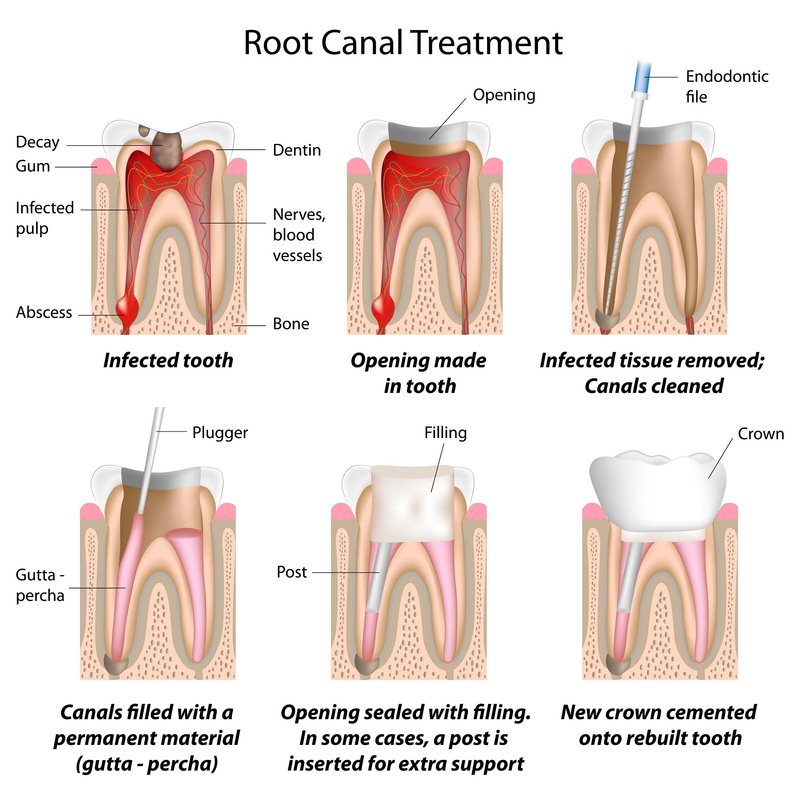ROOT CANAL TREATMENT
A Root canal treatment is a process where inflamed or dead pulp is removed from the inside of the tooth, enabling a tooth that was causing pain to be retained.
Dental pulp is the soft tissue containing nerves, blood and lymph vessels in the canal that runs through the centre of a tooth. When the pulp cannot repair itself from disease or injury, it dies. A cracked tooth or deep cavity can allow bacteria to enter the pulp and cause pulp inflammation and death. When the pulp becomes infected, it is best to remove it before it spreads to the tooth and surrounding tissues. If the infection is not treated, an abscess can form in the root tip. This can eventually cause damage to the bone around the teeth and spread to other parts of the body.
After removing the pulp, the root canals are cleaned, sterilised and shaped to a form that can be completely sealed with a filling material to prevent further infection. The treatment can take several appointments, depending on how complex the tooth is, and how long the infection takes to clear.
It may be possible to save a tooth via Root Canal Treatment, otherwise the tooth may need to be extracted to alleviate the pain and to prevent further spread of infection. Subsequently a crown or complex restoration to restore or protect the tooth may be a necessary recommendation.
Some symptoms of a dead or dying tooth may present with: Spontaneous pain or throbbing while biting, hyper-Sensitivity to hot and cold foods, a swollen face or site near a tooth.
A thorough examination by our dentists is essential to properly diagnosis this and other conditions and to treat these accordingly.
Contact us today and make an appointment to find out more.
Dental pulp is the soft tissue containing nerves, blood and lymph vessels in the canal that runs through the centre of a tooth. When the pulp cannot repair itself from disease or injury, it dies. A cracked tooth or deep cavity can allow bacteria to enter the pulp and cause pulp inflammation and death. When the pulp becomes infected, it is best to remove it before it spreads to the tooth and surrounding tissues. If the infection is not treated, an abscess can form in the root tip. This can eventually cause damage to the bone around the teeth and spread to other parts of the body.
After removing the pulp, the root canals are cleaned, sterilised and shaped to a form that can be completely sealed with a filling material to prevent further infection. The treatment can take several appointments, depending on how complex the tooth is, and how long the infection takes to clear.
It may be possible to save a tooth via Root Canal Treatment, otherwise the tooth may need to be extracted to alleviate the pain and to prevent further spread of infection. Subsequently a crown or complex restoration to restore or protect the tooth may be a necessary recommendation.
Some symptoms of a dead or dying tooth may present with: Spontaneous pain or throbbing while biting, hyper-Sensitivity to hot and cold foods, a swollen face or site near a tooth.
A thorough examination by our dentists is essential to properly diagnosis this and other conditions and to treat these accordingly.
Contact us today and make an appointment to find out more.


